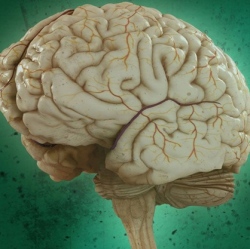
A study, published in an open-access paper in the journal Frontiers in Human Neuroscience, found that novice pilots who received brain stimulation via electrode-embedded head caps improved their piloting abilities, with a 33 percent increase in skill consistency, compared to those who received sham stimulation.
“We measured the average g-force of the plane during the simulated landing and compared it to control subjects who received a mock brain stimulation,” says Phillips.
“Pilot skill development requires a synthesis of multiple cognitive faculties, many of which are enhanced by tDCS and include dexterity, mental arithmetic, cognitive flexibility, visuo-spatial reasoning, and working memory,” the authors note.
The study focused on a working-memory area, the right dorsolateral prefrontal cortex (DLPFC), and the left motor cortex (M1), using continuous electroencephalography (EEG) to monitor midline frontal theta-band oscillatory brain activity and functional near infrared spectroscopy (fNIRS) to monitor blood oxygenation to infer neuronal activity.
The researchers used the XForce Dream Simulator package from X-Force PC and the X-plane 10 flight simulator software from Laminar Research for flight simulation training.
Previous research has demonstrated that tDCS can both help patients more quickly recover from a stroke and boost a healthy person’s creativity; HRL’s new study is one of the first to show that tDCS is effective in accelerating practical learning.
Phillips speculates that the potential to increase learning with brain stimulation may make this form of accelerated learning commonplace. “As we discover more about optimizing, personalizing, and adapting brain stimulation protocols, we’ll likely see these technologies become routine in training and classroom environments,” he says. “It’s possible that brain stimulation could be implemented for classes like drivers’ training, SAT prep, and language learning.”
